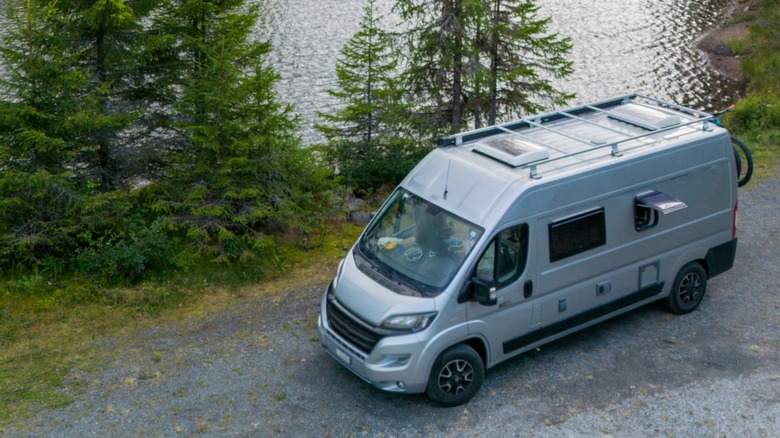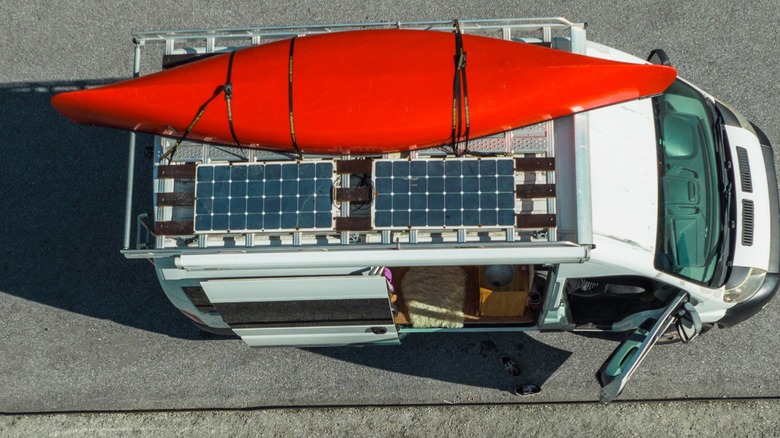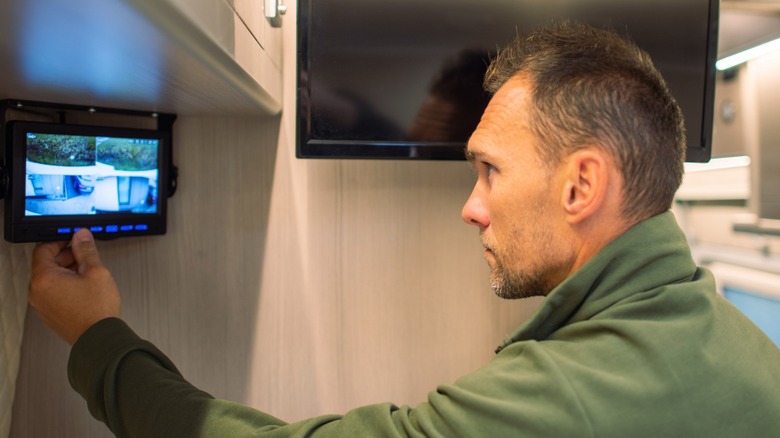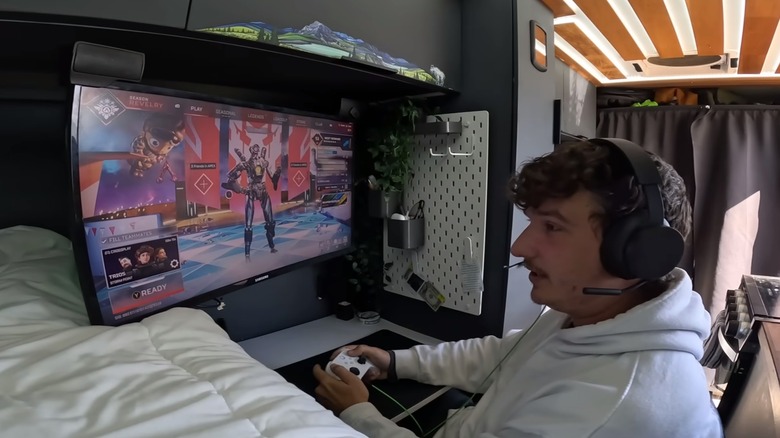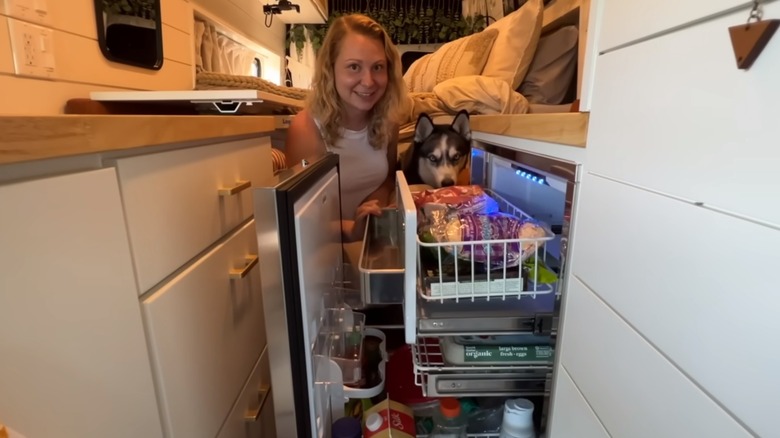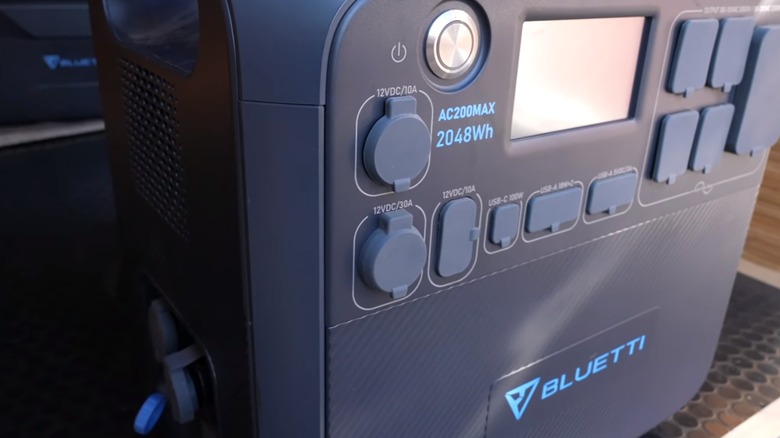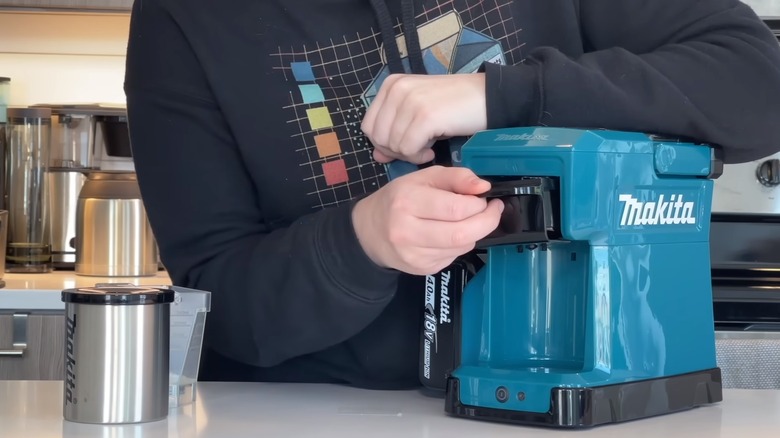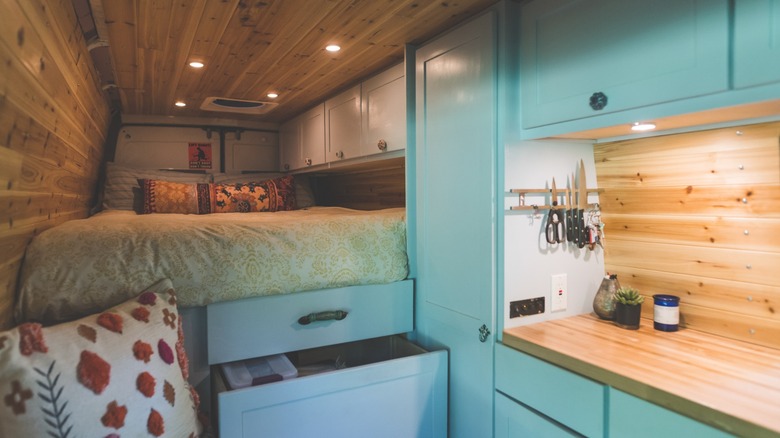7 Innovative Tech Upgrades For The Ultimate Comfort In Your Camper Van
While camper vans have been around for many decades. Model Ts were converted into campers in the 1910s, and their popularity seems to have seen a resurgence in recent years. Perhaps this is a false perception based on the proliferation of "van life" Instagram pages and YouTube channels, or perhaps it is genuinely a rising phenomenon. Regardless, many companies have seen the trend and stepped in with an endless supply of gadgets and accessories to capitalize on the popularity.
"Camper van" refers to one of several vehicle platforms converted either at the factory, by a coachbuilder, or by the owner into a vehicle in which one can travel and, at a minimum, sleep. The level of sophistication of camper vans can vary wildly from the very basic model with room for a bed to those that include small kitchen areas with onboard power and water supplies. Camper vans differ from recreational vehicles in that they share some of the same characteristics but remain a compact package built on a van or small truck chassis that is generally no more difficult to park than the average minivan.
No matter the type, outfitting with specialized equipment is crucial to having pleasant travels and many of these companies have been offering camping goods of increasing sophistication integrated with sometimes a surprising level of technology. While the list of all these products could go on for days, here are seven innovative tech upgrades to ensure the ultimate comfort of your camper van.
Solar power
Not so long ago, it would have been impractical to attempt to install any meaningful solar-generated power on any smaller vehicle, but advances in technology have now made it possible, practical, and affordable. Modern camper van owners have many options for generating power while parked in nearly any location. Furthermore, power generation can be done with either permanent or mobile solutions. Solar panels can be mounted to the top of the van ready to feed power inside at any time, or mobile solar panels can be stowed while not in use and set up when positioned at camp for the day.
The amount of power needed will be limited by the space available. Full-size vans with ample real estate up top will be able to produce ample energy while something like a VW Microbus will be much more constrained. Regardless, campers need to assess how much power they might need by adding up the energy draw from the various devices and appliances on board, such as cooking equipment or refrigeration units, and purchase panels accordingly. Batteries, a power inverter, and a charge controller will also be required. While they are more affordable than ever, solar panels are not necessarily cheap. Producing 100 watts of power will cost around $600, while more sophisticated and robust energy systems can cost thousands.
Security cameras
Camera technology has matured to the point that security cameras for home security are ubiquitous across the country and are providing more criminal evidence than ever. However, just because you are traveling and your domicile is on the move is no reason not to be just as secure. The vulnerability of a camper van is probably even more reason to have security cameras. Fortunately, a plethora of options now exist.
A range of RV security systems are available these days, but many of them are too big or overly sophisticated for a camper van. The solution needed for this application puts a premium on being compact. A simple option could be a dash cam with a rearview camera that can be set to record on a constant loop. More robust solutions are available, such as the Amazon Blink Mini camera which can be placed inconspicuously and expanded with multiple cameras easily. Other options include a specialized RV security system that combines the features of a car alarm and home security camera but may be costly, and some newer camera systems offer cellular connectivity, keeping you secure everywhere you remain on the grid.
The options, for the most part, are only limited by your budget and creativity.
Entertainment system
While traveling in a camper van can afford opportunities for hikes through the beautiful wilderness or visits to the beach, there will inevitably be some idle downtime. Since not every minute can be filled with adrenaline-inducing adventure, it is a good idea to have some onboard entertainment. Whether you need an upgrade or want to install something in your custom camper build, entertainment is a must.
If you have built your own rig, you will have a lot more freedom with what you can do. Most people will want to have a TV with an integrated sound system that can be connected via Bluetooth. Having the TV double as a monitor is useful, and incorporating a gaming system is also popular. Popular with many travelers are TVs that operate on 12 volts DC rather than the 120 volts AC in houses. A range of sizes are available, and they can be mounted in many ways to suit your needs. This can be on the ceiling with a flip-down hinge, on a wall-mounted arm, or some are flush-mounted on the wall with a hinge to swing out for viewing.
Regardless, adding enhanced sound is imperative. This can be as simple as a standard soundbar, but clever installers can hide a multi-speaker setup with amps and subwoofers, creating a mobile theater experience hidden from view. In the end, audio can be provided by something as simple as a Bluetooth speaker to a complete mobile recording studio, as one enterprising man from the U.K. has done.
Refrigeration
No matter how deep your travels go, you are going to have to eat at some point. Being on the road all the time, it is important to have options with you to keep healthy. Camper vans may have limited space, but you can still find ways to keep some fresh food on hand. The classic method of keeping food cool on the road is with a cooler. Given the quality of cooler brands such as Yeti, food can stay fresh for a very long time — up to a week using dry ice. Eventually, you will want to upgrade that to something for long-term usage, a compact RV refrigerator.
For more long-term solutions, you can choose between a 12-volt thermoelectric cooler, a 12-volt refrigerator, or a three-way absorption fridge. The thermoelectric cooler is the least efficient, and has limited cooling capacity. They are cheaper and work for weekends away but not long-term travel. 12-volt refrigerators are very popular and many of them come in a form much like a cooler. Many installations have them under a cabinet or counter to be slid out for use through the top-loading lid. These work well for most camper vans and come in sizes suitable for most applications. The final choice is the three-way refrigerator found in most motorhomes. These are better for bigger camper vans and can switch from 12-volt to 110-volt or propane.
Compact refrigerators are more costly than household units. While small dorm fridges can be picked up for about $100, expect to spend at least $300 for a 12-volt version, and substantially more to get ample space and a freezer.
Power storage
While you are driving down the highway, your van provides you with power for almost everything you need. You have climate control, a stereo system, and auxiliary power for charging devices. However, internal power goes away the moment you stop and turn the vehicle off. Save for leaving your engine running all night — which is not recommended for a host of reasons — you are going to need power. Packing a generator in a camper van is impractical and noisy, so your best bet is to install a power bank.
Modern batteries are great for storing large quantities of electricity and a properly designed and installed system can treat you well on your journeys. A power bank can be a relatively simple system built for a few hundred dollars or get increasingly complex and costly, depending on how you want to set it up. After determining your power load from accessories such as refrigerator, air conditioner, and lighting, you can estimate how much power you will need. Clever setups use a series of batteries that can be charged either by the van's alternator or solar panels. This requires a charge controller and a battery isolator to prevent voltage from both sources from overloading the system.
The batteries you choose will have an impact on how much power you can use and for how long. The battery choices generally include an absorbed glass mat (AGM) battery, a silicon dioxide battery, or a lithium battery. These have pros and cons that correlate to the price, so some good research is fundamental to assessing your budget. Add to this a good power inverter, and you will be ready to plug in whatever you need and make the most of your adventure.
Coffee
If you are someone accustomed to a hot cup of coffee first thing in the morning, having a reliable way to make it in the van is a must. Fortunately, there are options galore for caffeine-hooked travelers. Of course, relying on gas stations and coffee shops is one way to remain satiated, but some good mobile coffee technologies are available right now.
Low-tech solutions such as pour-overs and French presses are options, provided you can get hot water. 12-volt drip coffee makers from the truck stop also work. However, there are better options. The Papa Long Portable Single-Serve Car Coffee Maker plugs into the van's 12-volt outlet and is a self-contained contraption that brews a single cup while sitting in your vehicle's cup holder. For those who like a nice stout espresso, The Outin Nano Portable espresso maker is rechargeable and heats that water in its tank and presses it out the bottom directly into your cup. The quality of the espresso appears to be pretty good, too.
The best coffee maker of all has to be Makita's new mobile coffee maker. Yes — the company known for making drills and power saws also makes a durable portable coffee maker. You can take it anywhere, and when the battery gets low, just swap it with a spare 18-volt battery from your power drill and your morning will be good to go.
Lighting
If you do nothing else to upgrade your camper van, you should strongly consider upgrading the lighting. This applies to interior and exterior lights. There are so many different ways you can improve your camping experience not only by having enough light but also by having the right light. There's almost nothing more frustrating than trying to move around a darkened camper trying to find something or perform some task, but it is equally annoying when the only light you might have is bright, glaring, and offensive to your eyes, especially if someone is sleeping. Having a blend of bright overhead lights and subtle indirect lighting can ensure you can see when appropriate and set a mood when relaxing. This applies to the exterior as well for the same reasons.
Depending on your setup, you can get strip lights that use 12 volts or 110 volts to run along the ceiling as well as along the floors or under cabinets for all-over lighting that isn't too harsh. Inside, this can be augmented with small spotlights on flexible shafts to pinpoint light for reading or around the kitchenette, for example. Recessed lighting is also always a good choice as are indirect lighting from wall sconces. Anything to make it bright enough with indirect lighting will make it more comforting. Outside, awning light strips and glow lights beneath the van can add to the ambiance but it is also a good idea for a couple of bright LED light bars or spotlights for safety on demand. Regardless, the options available are endless, and range in price from Dollar Store cheap to costly custom lighting designs.
